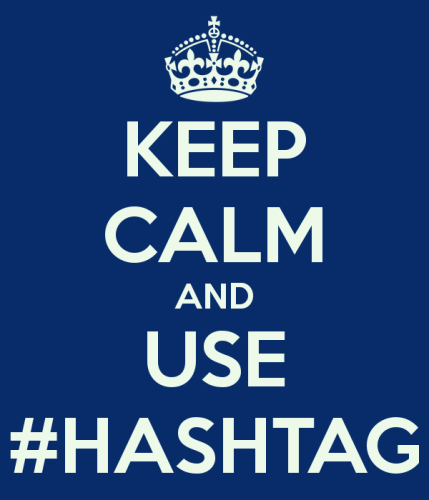How do you use Twitter? I’ll bet lots of ways. Maybe you’re creative. People use Twitter to show off what they can say in 140 characters. Or maybe you make your own news feed, without any stigma attached to what you like. You really can. People follow NPR, Taylor Swift, and Pope Francis all at once, just to see what each of them says about the news of the day. But you might want to be part of a larger conversation. That’s valid, too: #hashtags, @replies, and retweets are some of the most used features on Twitter.

A lot of people today use Twitter as a form of activism. In the past year, we have not only seen activist movements coalesce around hashtags like #BlackLivesMatter, we’ve also seen academicians march in step with hashtags such as #FergusonSyllabus. Despite what others have said, the #hashtag hype is real; and on Twitter the right one doesn’t merely make you part of the larger conversation, it just might get your issue noticed.
But, did you know that searching by the #hashtag function and following activist Twitter can enhance the research papers our students write for their classes here at UT? The fact that activism on Twitter is so prominent right now, coupled with the fact that activist issues need visibility to be engaged with (i.e., the #hashtag), means that students at UT who write papers about or surrounding activist controversies can use Twitter as a valuable resource! They can mine Twitter for direct quotes, for links to news articles that feature certain controversies (like the one below), or for information regarding who’s paying attention.
Muslim teen behind #IStandWithAhmed encourages others to follow their dreams: "Go for it!" http://t.co/hpE5x89pty http://t.co/uV9EymdRFT
— CBS News (@CBSNews) September 16, 2015
Take the sad events surrounding 14 year-old Ahmed Mohamed (#IstandWithAhmed) in Mid-September. Mohamed (@IStandWithAhmed) was detained after bringing a homemade clock to his North Texas school. Only a few minutes after the media released details of his detention, activists like DeRay McKesson(@deray), Shaun King (@ShaunKing), and others, began tweeting. They tweeted their own remarks, retweeted others’, and even tweeted news articles as they appeared online. Before noontime that day, Twitter knew that even the President had gotten involved.
Cool clock, Ahmed. Want to bring it to the White House? We should inspire more kids like you to like science. It's what makes America great.
— President Obama (@POTUS44) September 16, 2015
So, take a page from #FergusonSyllabus’s many books and look to Twitter. Just like Georgeown Professor Marcia Chatelain did when she developed the syllabus #hashtag, so too can students use Twitter for scholarly work. It’s an academic writing resource, with the ability to shape what students write by providing them with great quotes, knowledge about stakeholders in certain controversies, and what they’re saying!

